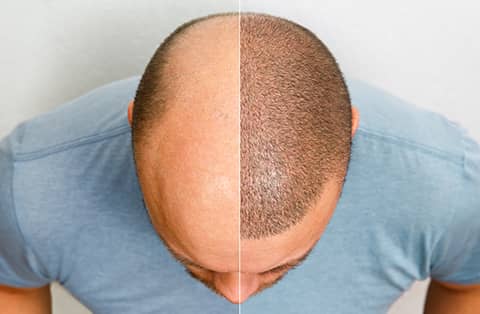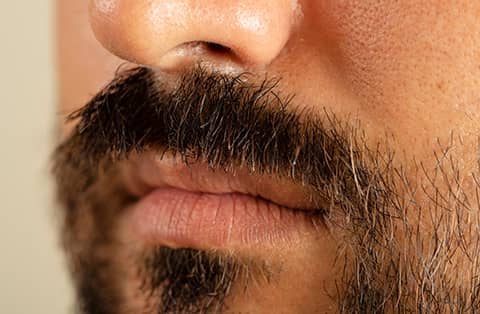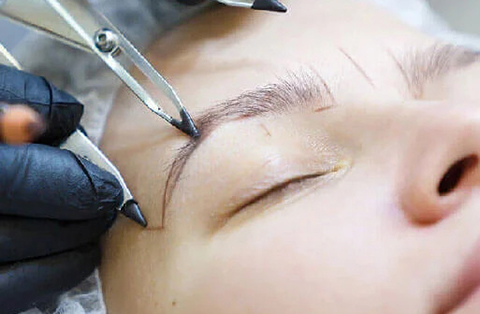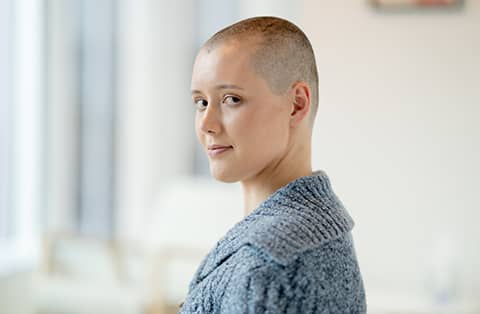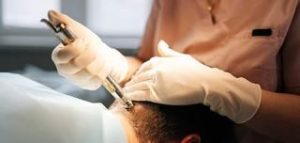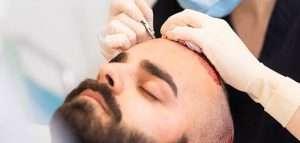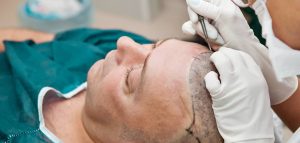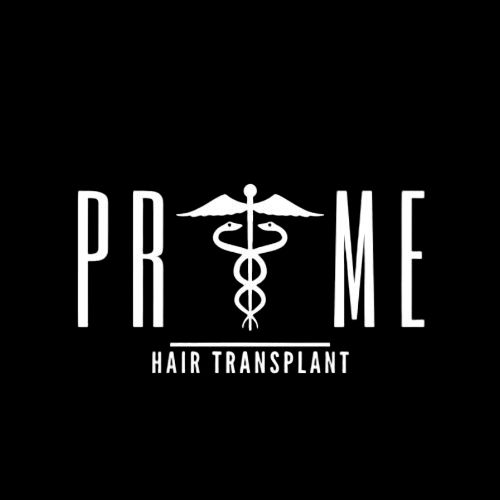Are you frustrated with loose skin on your chin? A sagging chin can affect your confidence and make you look older than you feel.
The good news is that there are both non-surgical and surgical options available to tighten and rejuvenate the skin in this area. From innovative treatments like laser therapy and injectable fillers to more permanent solutions like neck lifts, there’s a method for everyone.
In this article, we’ll explore the most effective ways to address loose chin skin, helping you find the right solution to restore a smoother, more youthful appearance.
What Causes Loose Skin Under the Chin?
Loose skin under the chin is a common concern for many people. It can be frustrating, as it often affects your appearance and can make you look older or heavier than you actually are.
Despite efforts with skincare routines or healthy living, you may still notice sagging in this area over time. Understanding the underlying causes is key to finding the most effective treatments.
Factors Contributing to Skin Laxity
Loose skin, or skin laxity, occurs when the skin loses its natural firmness and elasticity. Collagen and elastin, two proteins in the skin, are responsible for maintaining structure and tightness.
Over time, the production of these proteins slows down, leading to weaker skin that cannot “bounce back” as easily. External factors, such as sun damage and lifestyle choices like smoking, can accelerate this process.
The Role of Aging and Genetics
Aging is one of the most significant causes of loose skin under the chin. As you age, your skin naturally loses its ability to retain moisture and elasticity, causing sagging.
Genetics also play a major role in how and when your skin begins to loosen. If your family members experienced early skin sagging, you might be more prone to it as well. Even with proper skincare, genetics can influence how much or how little your skin ages.
Impact of Weight Fluctuations
Weight gain and loss can have a significant impact on the skin under your chin. When you gain weight, fat deposits accumulate, stretching the skin. If you lose weight quickly, the skin may not have enough time to retract, resulting in a sagging appearance.
Repeated cycles of weight gain and loss can make the skin lose its natural elasticity over time, contributing to loose skin in the chin and neck area.
Non-Surgical Treatments to Tighten the Skin Under Your Chin
Dealing with loose skin under your chin can feel discouraging, especially when creams and at-home treatments don’t deliver the results you want. Plastic surgery may seem intimidating or too invasive for some, but there are non-surgical treatments available that can effectively tighten the skin without downtime.
These advanced procedures use innovative technology to target sagging skin, restore firmness, and stimulate collagen production. Below, we’ll explore some of the most popular non-surgical treatments to help you achieve a smoother, more youthful chin.
Radiofrequency Energy Treatments
Radiofrequency (RF) treatments use controlled energy to heat the deeper layers of the skin, stimulating collagen production and promoting tighter, firmer skin over time.
Procedures like Thermage and Forma are common RF treatments that target loose skin under the chin. The heat energy helps tighten existing collagen fibers while encouraging new growth.
Results develop gradually, with improvements seen over several months, making RF a safe, non-invasive solution with no downtime.
Laser Treatments for Skin Tightening
Laser treatments, such as Fraxel and Ultherapy, offer another effective non-surgical option for chin tightening. These treatments use focused laser energy to penetrate the skin’s deeper layers, boosting collagen production and gradually lifting sagging skin.
Laser treatments can be highly targeted and are often used to improve skin texture and elasticity. While some mild redness or swelling may occur, there is minimal recovery time, and most people can return to their regular activities immediately.
Injectable Treatments to Stimulate Collagen
Injectables, like Sculptra, work by stimulating collagen production within the skin. Unlike fillers, which simply add volume, Sculptra encourages the body to rebuild its own collagen over time, resulting in firmer, smoother skin.
These treatments are injected directly into the skin under the chin and offer gradual improvements. Most patients require a series of treatments spaced out over a few months to achieve optimal results. Injectable treatments are minimally invasive, with little to no recovery time.
Understanding Surgical Options for Chin Tightening
If non-surgical treatments haven’t provided the results you’re looking for, surgical options can offer a more dramatic and long-lasting solution to tighten loose skin under the chin.
While surgery typically requires more recovery time, these procedures are designed to effectively remove excess skin and fat, providing a noticeable lift and contour. Below are the most common surgical options for chin tightening, each tailored to different needs and outcomes.
Neck Lift
A neck lift is one of the most effective procedures for tightening the skin under the chin. This surgery removes excess skin and fat, while tightening the underlying muscles, resulting in a more defined chin and jawline. It’s ideal for individuals with significant sagging.
Chin Liposuction
Chin liposuction removes fat deposits under the chin, creating a more contoured appearance. This option is best for those with excess fat but good skin elasticity. It can often be combined with other procedures like a neck lift for optimal results.
Related Article: Have a Slimmer Face with Facial Liposuction & Cheek Liposuction
Facelift (Rhytidectomy)
A facelift can address sagging skin not just in the face but also around the chin and neck area. While more extensive than a neck lift, it provides comprehensive rejuvenation for both the lower face and chin.
Each of these surgical options offers distinct benefits, and your surgeon will recommend the best procedure based on your specific concerns and desired results.
How Long Do Chin Tightening Treatments Take to Show Results?
One of the most common questions when considering chin-tightening treatments is how long it will take to see results. Whether you’re opting for a non-surgical or surgical approach, understanding the timeline is essential.
Many patients feel frustrated by slow or gradual improvements and want to know when they can expect visible changes.
Timeline for Non-Surgical Treatments
Non-surgical chin-tightening treatments, such as radiofrequency, laser, and injectables, generally produce gradual results. It can take anywhere from a few weeks to several months to see noticeable improvements.
For example, radiofrequency treatments like Thermage or laser options such as Ultherapy typically require 2 to 3 months for collagen production to rebuild and firm the skin. Injectable treatments like Sculptra may take a few sessions over several weeks, with results becoming more visible after 3 to 6 months.
Recovery Period after Surgical Treatments
Surgical treatments, such as a neck lift or chin liposuction, offer more immediate results but come with a recovery period. After surgery, swelling and bruising are common, and it may take a few weeks to see the final outcome.
Most patients notice improvements within 4 to 6 weeks, with optimal results appearing around 3 months post-surgery. While surgery involves more downtime, the results are often much more dramatic and lasting compared to non-surgical options.
Longevity of Different Treatment Results
Non-surgical treatments usually provide temporary results, lasting anywhere from 6 months to 2 years, depending on the procedure. Maintenance treatments are often required to preserve the effects.
Surgical results, on the other hand, are long-lasting, with neck lifts and chin liposuction often providing permanent results, especially when combined with a healthy lifestyle. However, natural aging will continue, and some patients may require touch-up treatments over time.
Choosing the Right Treatment for Different Skin Types
When considering chin-tightening treatments, it’s important to recognize that not all treatments work the same for everyone. Your skin type plays a significant role in determining which option will deliver the best results.
Many people feel overwhelmed by the wide variety of treatments available, unsure of which will suit their specific skin needs. Choosing the wrong treatment can lead to disappointing results or even complications. To avoid this, understanding your skin type and working with a cosmetic professional is essential.
Consulting with a Cosmetic Professional
Before committing to any treatment, it’s crucial to consult with a qualified cosmetic professional. They can assess your skin’s unique needs and recommend the most effective treatment options.
A professional will evaluate factors like skin elasticity, texture, and overall health, ensuring you choose a treatment that works for you. This step is essential to avoid unnecessary risks and maximize your chances of achieving your desired outcome.
Understanding Your Skin Type
Skin types can vary greatly from person to person, ranging from oily to dry, sensitive to resilient. For example, those with sensitive skin may experience more irritation or redness with certain laser or radiofrequency treatments.
On the other hand, individuals with thicker, oilier skin might require more intensive treatments to achieve noticeable results. Understanding whether your skin is prone to hyperpigmentation, scarring, or inflammation is also key in selecting the right chin-tightening procedure.
Customized Treatment Plans
Once your skin type is identified, your cosmetic professional can create a customized treatment plan tailored specifically to your needs. This may involve combining multiple treatments, such as pairing a non-surgical radiofrequency session with injectable treatments, or recommending surgery if your skin has more advanced laxity.
A personalized approach ensures that you receive the most effective treatment with minimal risks, providing you with smoother, firmer skin that matches your aesthetic goals.


